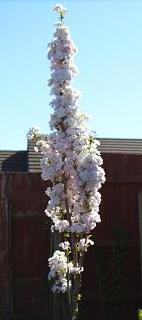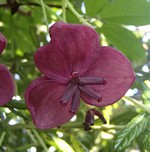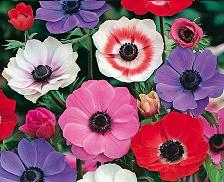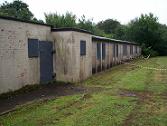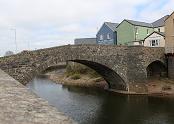Bridgend PAST
PRESENT
FUTURE?
Bridgend History

 Bridgend
the town by the river
Bridgend
the town by the river
Welcome to
Alan's
Gardeners Calendar
April
General Gardening Tips for April!
SHRUBS and TREES
-
There still is time to plant trees
and shrubs. However, by mid month it will be a little late to transplant
large trees or shrubs, so do them now.
-
The months of March, April and early
May is ideal for
pruning evergreens. So if you have a Juniper, Cypress or conifer that need shearing or
pruning this is a good time to accomplish this task. Remove all dead,
diseased, and undesirable wood. However, do not prune back into the bare
wood part of the plant.
-
Prune your Forsythia after it
finishes flowering.
PERENNIALS, ANNUALS
and BULBS
-
April is the month for planting
summer flowering bulbs like dahlias, gladiolas and lilies. Mix bulb
fertilizer, processed manure and peat moss into the planting soil.
Tuberous Begonias should not be set outdoors until all danger of frost
has passed, so wait until next month.
-
Plant annual seeds of asters, cosmos,
marigolds, zinnias in the garden.
-
When all frost danger has passed you
can move your stored fuchsias and geraniums outdoors. Trim them back,
feed and re-pot if necessary. Water them well.
-
When they have finished blooming, you
should deadhead your spring flowering bulbs. Do not cut off the green
foliage yet! These green leaves continue to grow for a few weeks, and
provide the bulb with food for flowering next year.
-
Divide perennials like Daylilies,
Delphiniums, iris, chrysanthemums, Daisies, and Phlox.
-
Hybrid Tea Roses should be fertilized
prior to buds beginning to bloom. Using a systemic fertilizer will help
prevent insect infestation later in the summer, as it feeds your rose.
-
Plant new rosebushes before growth
starts and buds swell, place some bone meal in the base of the hole
along with some multi purpose compost and water in well.
FRUITS and
VEGGIES
-
Control weeds and aerate the soil by
cultivating between the rows of plants.
-
April is a great time to select and
plant fruit trees and berry plants. Fruits and berries do best when
planted in full sun.
-
Plant perennial vegetables like
asparagus, rhubarb, horseradish, etc. It's also time to plant
cabbage, carrots, cauliflower, beets,
peas and spina.ch.
Root crops like potatoes, radishes, parsnips and onions can be planted
at anytime. Later this month you can start planting beans and corn.
Warmer weather crops like tomatoes; squash, cucumbers and peppers should
not be planted until next month, but can be given an early start in the
greenhouse.
-
As your open ground seeded crops
sprout, be sure to keep them thinned out to avoid crowding.
-
Cut out all the dead canes from your
raspberry patch. The new canes that will bear this year's fruit should
have new, swollen buds along the edges. Thin these to five canes per
foot of row to allow good air circulation and prevent overcrowding and
mildew.
-
When danger of frost has passed,
uncover strawberry beds and keep them well watered.
THE LAWN
-
The application of a spring lawn
fertilizer will give your lawn a boost and improve its colour and
appearance. If there is moss growing in the lawn, use spring lawn
fertilizer that has the moss-killer included, so you can do both jobs in
one easy application,
or
you could use lawn sand.
-
Spring is also a good time to thatch
and over-seed the lawn. Thatch buildup can smother your lawn and provide
an environment for diseases. Remove thatch with a springbok raking, or
with a de-thatching machine. Spreading lawn seed will help fill in the
gaps in the lawn and will prevent weed germination.
-
Aerating the lawn will allow water to
penetrate deeper into the lawn soil and reduce the need to water during
the dryer months ahead. Use a garden fork and punch holes over the
surface of your lawn.
-
As mowing becomes necessary, be
certain that the blade is sharp to prevent tearing the grass tips. Set
the blade on your lawnmower to cut the grass at 2 1/2 inches to avoid
scalping. (A mulching blade will eliminate the need to rake or bag the
clippings, prevent thatch buildup, and the clippings will provide food
for the lawn.)
HOUSEPLANTS
-
Rotate your houseplants so that each
side receives its share of light, for even growth and a balanced shape.
-
As the sun's rays strengthen, some
plants, such as African Violets, may need to be moved away from a
south-facing window to avoid leaf scorch.
-
Spring-cleaning your plants will keep
them beautiful and help to avoid diseases. Remove any spent flowers,
dead leaves or branches, or any yellowing leaves. Rinse the dust from
the leaves with the kitchen sprayer. Clean leaves allow the plant to
breathe!
-
Pinching back the tips of foliage
plants will stimulate new growth and make your plant fuller and bushier.
-
If you keep a Coleus as a houseplant
you can still start cuttings for transplant to the garden. Use a sharp
clean knife to cut the stem just below a leaf node. Remove the lowest
leaves, dip the cut end into a rooting hormone and insert it into some
fresh, sterile potting soil. These cuttings will be ready to use by late
May, early June.
ODDS and ENDS
-
Arbor Day- Plant a tree, but make
sure it is appropriate to your size of garden.
-
Keep all your transplants well
watered during dry spells.
-
Check all plants in containers to see
that they are getting enough water.
-
When you receive your mail order
plants or pick up a few perennials before you are ready, make a trench
for the perennials and heel them into the ground in a protected area. If
you are receiving plugs then place them in a greenhouse or cold frame
and pot them on as soon as possible.
Share with your friends on Facebook or Twitter. Just Click the link below.
 Facebook
Facebook
 Twitter
Advertisements
Twitter
Advertisements

42 Dunraven Place, Bridgend
Contact: Mike 07840 287 383
web site here

Bridgend Sandwich Bar.
Est: 1940
Copyright BridgendPPF.com 2017







 Bridgend
the town by the river
Bridgend
the town by the river 

